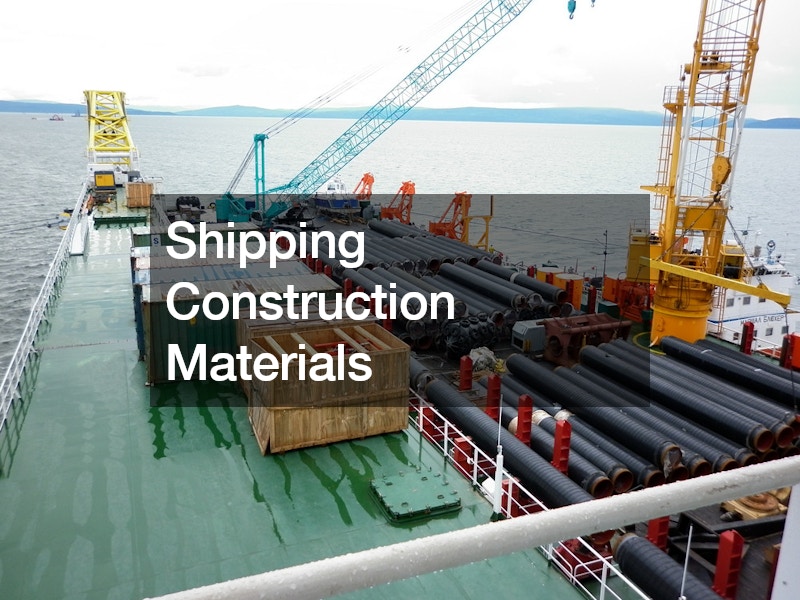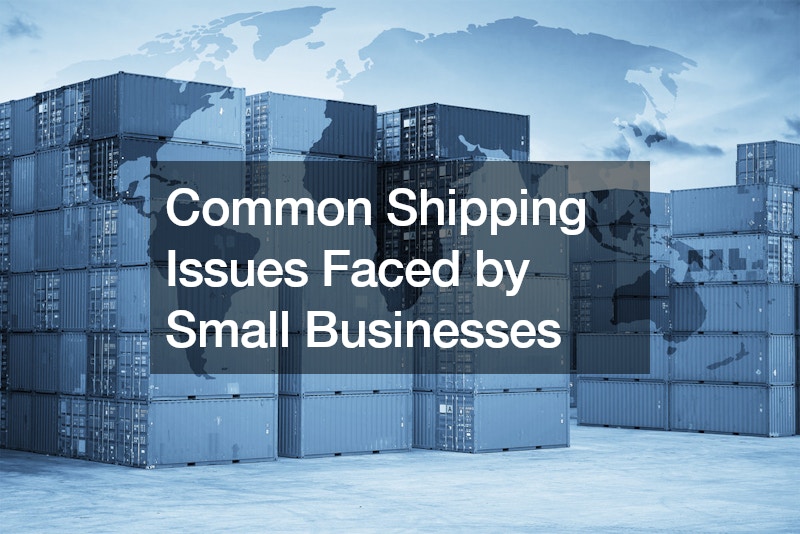Shipping is a crucial aspect of running a small business, but it often comes with its own set of challenges. From navigating logistics to ensuring the safe delivery of products, small business owners frequently encounter common shipping issues that can impact their operations. Whether you’re managing delicate items or bulky goods, understanding these challenges and knowing how to address them can make a significant difference. In this blog, we will explore several common shipping issues faced by small businesses, offering insights into how to effectively handle them to keep your operations running smoothly.
Handling Fragile and Hazardous Goods
Shipping fragile and hazardous goods presents unique challenges that can cause significant shipping issues if not managed properly. Ensuring that these items are handled with care and transported safely requires specialized packaging, clear labeling, and adherence to regulatory standards. For example, lithium battery buckets, which are often classified as hazardous, must be shipped in accordance with strict safety regulations to prevent potential accidents.
When dealing with lithium battery buckets, it’s crucial to use appropriate packaging materials and follow all safety guidelines to avoid common shipping issues such as leaks or short circuits. This includes using fire-resistant packaging and ensuring that the batteries are properly secured to prevent movement during transit. By paying close attention to these details, businesses can mitigate risks and ensure that their fragile and hazardous goods arrive safely and in compliance with all regulations.
Ensuring Proper Adhesive Transportation
Transporting adhesives can present its own set of common shipping issues, especially when dealing with hot melt adhesives. These materials require specific conditions to remain effective and safe during transit. Proper handling and packaging are essential to prevent issues such as temperature fluctuations or leaks, which can affect the quality of the adhesive and potentially cause damage to other goods.
For hot melt adhesives, it is important to use insulated packaging and to ensure that the adhesives are kept at the right temperature throughout the shipping process. This helps to prevent common shipping issues like solidification or degradation of the adhesive, which could impact its performance. By implementing effective shipping practices and monitoring the conditions of transportation, businesses can avoid these issues and ensure that their adhesive products arrive in optimal condition.

Shipping Bulk and Loose Materials
Shipping bulk and loose materials involves a unique set of common shipping issues that require careful planning and execution. These materials, which are often shipped in large quantities or in a non-bulk form, can pose challenges in terms of packaging, handling, and transportation. Proper techniques must be employed to ensure that the materials are secured and protected during transit to prevent spillage, contamination, or damage.
When it comes to bulk wood flake bedding, addressing common shipping issues involves using appropriate containers and securing the load to prevent shifting. Ensuring that the bedding is properly packed and that the packaging can withstand the rigors of transportation is essential to avoid issues such as material loss or quality degradation. By focusing on effective packaging solutions and proper handling practices, businesses can ensure that their bulk materials arrive intact and in good condition.
Transporting Heavy Industrial Equipment
The transportation of heavy industrial equipment is fraught with common shipping issues that require specialized knowledge and equipment. Heavy items often need to be transported using specific methods and machinery to handle their weight and size, which can complicate logistics and increase the potential for damage. Proper planning and execution are crucial to mitigate these issues and ensure the safe delivery of equipment.
For example, transporting mill liners involves addressing common shipping issues such as securing the equipment properly to avoid shifting and ensuring that the transport vehicle is equipped to handle the weight. Using appropriate rigging and loading techniques, as well as choosing the right transport method, can help prevent damage during transit and ensure that the heavy equipment reaches its destination without incident. By understanding and addressing these specific challenges, businesses can improve their shipping processes and protect their valuable equipment.

Managing Shipments of Specialized Components
Managing shipments of specialized components presents common shipping issues that require tailored solutions to ensure safe and efficient delivery. These components often have unique handling and transportation requirements due to their specific characteristics, which can complicate the shipping process. Addressing these issues effectively is crucial for maintaining the integrity of the components and meeting delivery deadlines.
For metal random packing, one of the common shipping issues involves ensuring that the components are properly secured and protected to prevent damage during transit. This includes using appropriate packaging materials and methods to cushion the components and avoid movement that could lead to scratches or other forms of damage. By focusing on specialized packaging solutions and careful handling, businesses can reduce the risk of damage and ensure that their components arrive in excellent condition.
Navigating Cold Chain Logistics
Navigating cold chain logistics involves addressing common shipping issues associated with maintaining specific temperature conditions during transit. This process is critical for ensuring that perishable goods and temperature-sensitive products are kept within the required temperature range to prevent spoilage or degradation. Proper management of the cold chain is essential to ensure the safe and effective delivery of these products.
Reefer transportation services play a key role in overcoming common shipping issues related to cold chain logistics. These services provide the necessary refrigeration and temperature control required to transport sensitive items, such as food products or pharmaceuticals, without compromising their quality. By utilizing reliable reefer transportation and monitoring temperature conditions throughout the shipping process, businesses can effectively manage the challenges of cold chain logistics and ensure that their products reach their destination in optimal condition.
Delivering Large and Bulky Items
Delivering large and bulky items often presents common shipping issues related to size, weight, and handling. These items require special consideration to ensure they are transported safely and efficiently. Proper planning and execution are key to managing the logistics of such shipments, from choosing the right transport method to ensuring the items are securely loaded and unloaded.
When dealing with new golf carts, addressing common shipping issues involves using equipment and methods that can accommodate the size and weight of the carts. This includes selecting appropriate vehicles for transport, ensuring proper loading techniques, and securing the carts to prevent movement during transit. By implementing these practices, businesses can mitigate risks and ensure that their large and bulky items arrive at their destination in good condition.

Transporting Temperature-Sensitive Materials
Transporting temperature-sensitive materials involves navigating common shipping issues related to maintaining specific temperature conditions throughout the transit process. These materials require careful handling and temperature control to ensure their quality and effectiveness are preserved. Addressing these challenges effectively is crucial for successful delivery.
Commercial dry ice blasting is a prime example where maintaining proper temperature is vital. Common shipping issues for such materials include preventing temperature fluctuations and ensuring that the dry ice remains effective throughout the shipping process. Utilizing specialized packaging and temperature-controlled transport options can help address these issues, ensuring that the materials arrive in optimal condition and ready for use. By focusing on temperature control and proper handling, businesses can effectively manage the complexities of shipping temperature-sensitive materials.
Handling Liquid and Semi-Solid Freight
Handling liquid and semi-solid freight presents common shipping issues that require careful attention to packaging and transport methods. These types of freight can be prone to leakage, contamination, and stability issues, which can complicate the shipping process and potentially damage other goods. Ensuring that these materials are properly contained and handled is essential for a successful delivery.
When shipping used cooking oils, addressing common shipping issues involves using leak-proof containers and ensuring that the oils are securely packed to prevent spills. Additionally, it’s important to choose transport methods that can accommodate the nature of the cargo and handle it with care. By implementing effective packaging solutions and proper handling techniques, businesses can mitigate the risks associated with liquid and semi-solid freight and ensure safe delivery.
Shipping Agricultural Products
Shipping agricultural products involves navigating common shipping issues related to the size, weight, and nature of these items. These products often require specialized handling and packaging to prevent damage and ensure they arrive in usable condition. Proper logistics and planning are crucial to address these challenges effectively.
Agricultural drain tiles are a good example of products that require specific shipping considerations. Common shipping issues for such items include ensuring that they are securely packed to prevent breakage and selecting appropriate transport methods to handle their weight and size. By using the right packaging materials and transport solutions, businesses can effectively manage the challenges of shipping agricultural and construction products, ensuring that they arrive at their destination intact and ready for use.

Shipping Construction Materials
Shipping construction materials presents common shipping issues related to the durability and handling of bulky, heavy, and often irregularly shaped items. These materials often require specialized packaging and transport methods to prevent damage and ensure they arrive at the construction site in usable condition. Proper logistics and handling are critical to overcoming these challenges.
When shipping items such as steel beams, concrete blocks, or lumber, common issues include managing the weight and size of the materials and securing them to prevent shifting or breakage during transit. Using reinforced packaging and selecting appropriate transport vehicles equipped to handle large loads can help mitigate these problems. Additionally, coordinating with transport providers to ensure timely delivery and proper unloading at the construction site is essential. By addressing these specific needs and implementing effective shipping practices, businesses can ensure that construction materials are delivered safely and efficiently, minimizing disruptions to construction projects.
Transporting Time-Sensitive Materials
Transporting time-sensitive materials involves managing common shipping issues related to meeting strict deadlines and maintaining product integrity throughout the transit process. These materials often require precise timing and careful handling to ensure they arrive on schedule and in optimal condition. Efficient logistics and reliable transport methods are essential for addressing these challenges.
For example, transporting products like perishable goods or critical medical supplies requires strict adherence to delivery schedules and temperature controls. Common shipping issues include delays that could compromise the quality of the materials or cause them to become unusable. To mitigate these risks, businesses should utilize expedited shipping options and closely monitor the shipment to ensure it remains on track. By focusing on timely delivery and maintaining proper handling procedures, businesses can effectively manage the complexities of shipping time-sensitive materials and meet their operational deadlines.
Managing These Common Shipping Issues
Managing common shipping issues involves implementing strategic solutions and best practices tailored to specific challenges. Effective management is essential for maintaining smooth operations and ensuring that goods are delivered safely and on time. By addressing these issues proactively, businesses can minimize disruptions and enhance their shipping processes.
To manage common shipping issues effectively, businesses should start by thoroughly assessing their shipping needs and identifying potential challenges. This includes choosing the right packaging materials, employing proper handling techniques, and selecting appropriate transport methods. For instance, when dealing with fragile items, investing in high-quality packaging and clearly labeling them as delicate can prevent damage. For temperature-sensitive or time-sensitive shipments, using specialized containers and monitoring transport conditions closely can help ensure that the products remain in optimal condition.
Additionally, establishing strong relationships with reliable shipping partners and staying informed about industry best practices can further enhance shipping management. Regularly reviewing and adjusting shipping procedures based on feedback and performance metrics will help businesses continuously improve their shipping strategies and address common issues effectively. By taking these steps, businesses can achieve more efficient and reliable shipping operations, ultimately benefiting their overall performance and customer satisfaction.
Conclusion
Addressing common shipping issues is vital for the smooth operation of any small business. Whether dealing with fragile items, temperature-sensitive materials, or bulky goods, understanding the unique challenges associated with each type of shipment can help prevent problems and ensure successful delivery. By implementing effective packaging, handling, and transport solutions tailored to specific needs, businesses can mitigate risks and enhance their shipping processes. Keeping these considerations in mind will not only help in overcoming shipping challenges but also contribute to overall operational efficiency and customer satisfaction.





